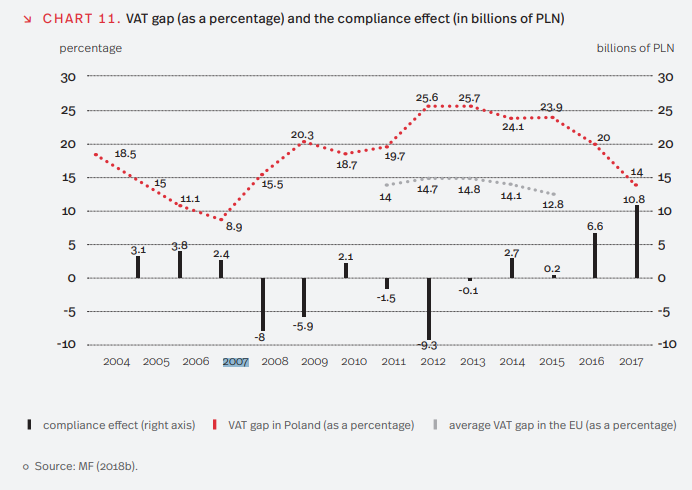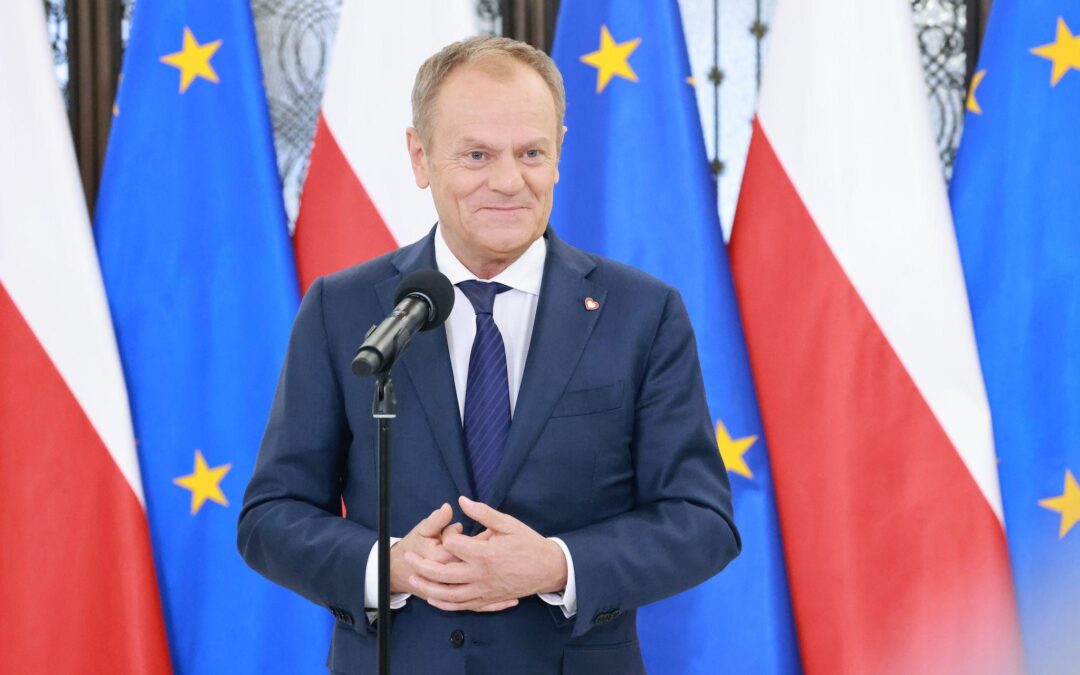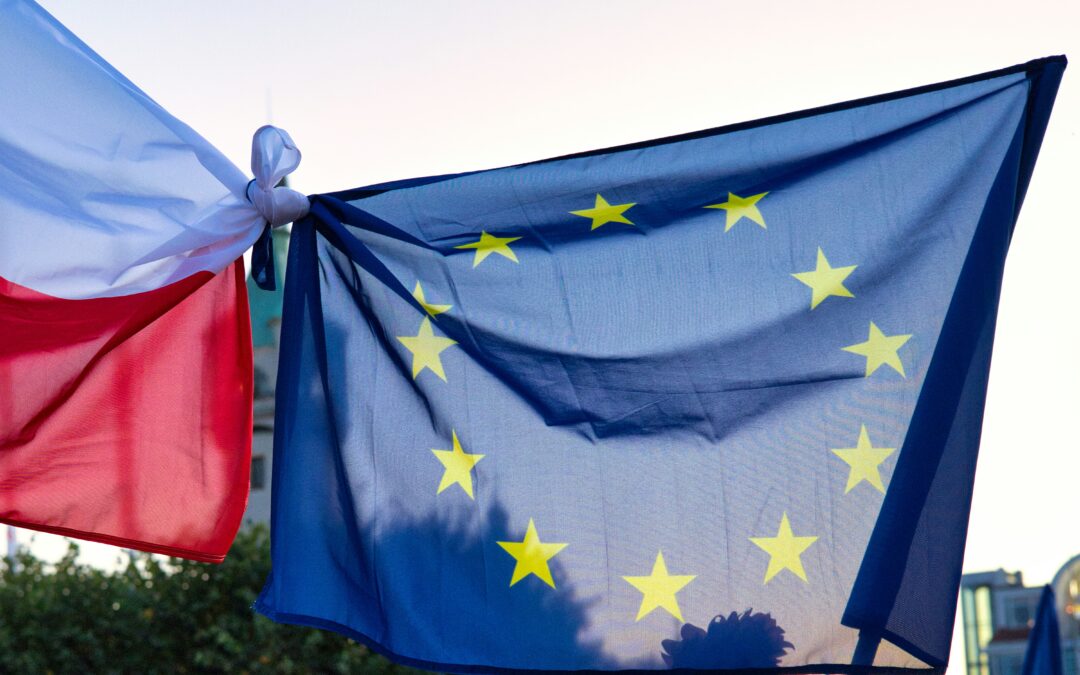Poland has had the European Union’s joint second highest level of success in improving VAT collection, shows a new report by the European Commission.
In 2020, Poland’s “VAT gap” – a measure of the difference between the expected revenues from value-added tax (VAT) and those actually collected – stood at 11.3%, found the commission. That was 9.1 percentage points lower than in 2016. Hungary recorded the same decline and only Latvia, with 10.8 percentage points, had a larger one.
The period saw “Poland record one of the fastest increases in VAT compliance in the EU,” noted the commission, which pointed to the country’s implementation of SAF-T international standards on electronic data exchange and “introduction of other measures targeting fraud and evasion”.
Wg raportu #KE #LukaVAT w 2020 r. wyniosła 11,3% i spadła o 1,4 pkt proc. w stosunku do 2019 r.
Wysokie tempo spadku luki #VAT to m. in. efekt wprowadzania nowoczesnych narzędzi uszczelniających system podatkowy, takich jak #JPK_VAT i #SplitPayment.
➡ https://t.co/WWHzxUMR8U pic.twitter.com/qdyUmtuPZb
— Ministerstwo Finansów (@MF_GOV_PL) December 9, 2022
When the current ruling Law and Justice (PiS) party came to power in 2015, Poland’s VAT gap stood at 23.9%. It blamed the former government – which had inherited a VAT gap of just 8.9% in 2007 – for allowing billions of zloty of revenue to be lost.
PiS made improving collection and clamping down on fraud one of its priorities. “The high rate of decline in the VAT gap is, among other things, the result of the introduction of modern tools to tighten the tax system,” said the finance ministry in a statement last week.
Among the measures it pointed to are increased penalties for VAT fraud, the split payment mechanism, the list of VAT taxpayers, electronic reporting, online cash registers and e-receipts.
The European Commission commented that Poland’s VAT gap decline from 2019 to 2020, of 1.4 percentage points, was “likely facilitated…[by] the large increase in the value of electronic transactions of nearly 20% and the decline of the bankruptcy rate of approximately 8.5%”.

Poland’s VAT gap from 2004 to 2017, according to finance ministry data (source: Reducing the VAT gap: lessons from Poland, Polish Economic Institute, 2019)
Poland’s finance ministry believes that the VAT gap actually fell to 10.4% in 2020, almost 1 percentage point lower than the EU estimate. Its findings also indicate that the gap declined even further in 2021, to 4.3%, though the EU has not yet published figures for that year.
The European Commission – which estimates that member states lost a combined €93 billion in VAT revenues in 2020 – emphasises that the current crisis facing Europe makes improving VAT collection even more pressing
“Losses are clearly detrimental to overall public finances at a time when member states are adjusting budgets to deal with the social and economic effects of recent energy price spikes and Russia’s war of aggression against Ukraine,” it notes.
The commission argues that the EU can recover up to €18 billion a year if it implements measures such as real-time digital reporting based on e-invoicing for businesses that operate across EU borders, obliging short-term rental services to pay VAT, and introducing a single VAT registration across the bloc.
Main photo credit: Adam Guz/KPRM (under CC BY-NC-ND 3.0 PL)

Alicja Ptak is senior editor at Notes from Poland and a multimedia journalist. She previously worked for Reuters.



















